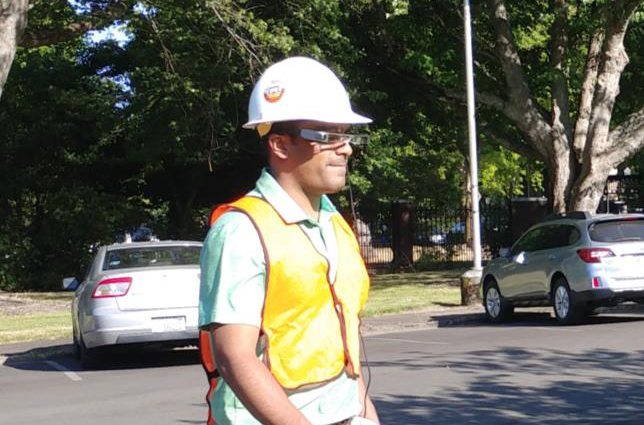-
December 06, 2018
PacTrans Technology Transfer Success Story 2018 #3: Location and View-Frustum Tracking System of Workers for Safety Applications on Construction Work-zones

“The construction industry is infamous for its hazardous working environments due to workers-on-foot commonly needing to function at dangerous heights and in close proximity to other construction entities such as moving heavy equipment. These hazardous operations result in an increased risk of worker injuries and fatalities caused by fall hazards and struck-by object or equipment incidents. In 2016, the Bureau of Labor Statistics (BLS) noted that of the 991 fatalities in the construction industry, their preeminent causes were falls, struck-by object or equipment, electrocution, and lastly, caught-in/between equipment. It can be noted that the all of the above causes, dubbed the Fatal Four, and especially, falls, struck-by, and caught in-between equipment are caused due to a lack of situational awareness of the worker, that is further caused due to a lack of knowledge regarding their proximity to hazards (falls and equipment),” says PacTrans PI and Oregon State University Civil & Construction Engineering Assistant Professor, Joseph Louis. His research interest lies at the intersection of simulation, visualization, and automation within the context of construction operations. PacTrans has previously funded Dr. Louis’s research investigating Improving Safety on Highway Work-zones by Real-time Tracking of Operation and Equipment Status.
Dr. Louis recently utilized PacTrans Technology Transfer Success Story funds to implement the developed framework in a commercially available “smart-helmet” produced by Daqri® that is engineered for use in rugged environments and is equipped with its own localization system. His report can be found here.
“The objective of the technology transfer effort to provide a suitable solution that could enable the tracking of worker position and orientation on the worksite and deliver effective warnings about potential hazards that the workers were in close proximity to, and were not aware of. Furthermore, the use of AR glasses in the construction industry is being actively investigated by researchers in both industry and academia as a means of communicating plans and drawings to worker on the site. This aspect of overlaying virtual content over the real world also has potential for being applied in delivering safety warnings to workers as a warning is delivered directly to their field of vision. Aside from the delivery of messages directly into the worker’s field of view, AR glasses typically are equipped with location and orientation sensors as well as connectivity to the internet, which make them ideal for tracking workers on the site. For this project, the suitability of delivering warnings to workers via a commercially available set of AR Glasses, Epson Moverio BT3001, was tested along with a review of its capabilities in replacing the prototype hardware that was developed during the course of the research.”
Further, the hardware was showcased to industry stakeholders during the PI’s educational session at the Associated General Contractors Oregon-Columbia Chapter Summer Convention on August 10th, 2018.


